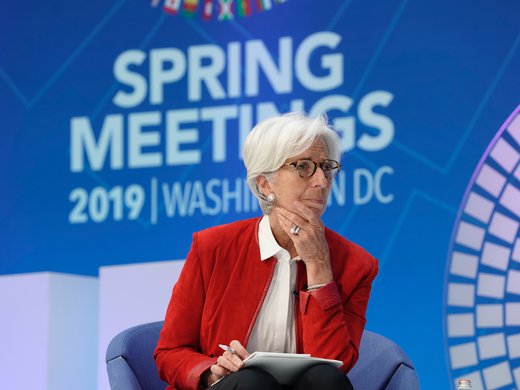Momentum is building for Rogers to offer the sale of Shaw’s Freedom Mobile business as a solution to Competition Bureau concerns about the proposed $26 billion merger of the two telecom giants. Rogers is reportedly engaging potential buyers, including the founder of Freedom’s predecessor Wind Mobile, and reports suggest the federal government is testing the interest of international players to pick up the assets.
But as we've passed the one-year mark since the announcement of the Rogers-Shaw merger, the Standing Committee on Industry and Technology (INDU) released its report following public hearings and study of the proposed transaction. Although initial reports suggested the report would advocate for the sale of Shaw’s wireless assets, the path Rogers is now pursuing, the committee’s recommendation was much stronger than expected: namely, that arguments in favour of the merger are unconvincing, and it should not proceed.
The recommendation contrasts with the open-ended statement by Minister of Innovation, Science and Industry François-Philippe Champagne on March 3, which left open the possibility for the merger to be allowed with the transfer of at least some of Shaw’s spectrum assets, potentially those previously discounted to foster wireless competition, and a complex and risky remedy focused on carving off Shaw’s wireless business.
By providing a clear path forward, the committee’s recommendation should encourage the Bureau to buck the trend of its previous action in the telecommunications sector, and truly protect Canadians.
INDU Rightly Skeptical of Proponents’ Claims
The committee’s report clearly illustrates why regulators and Canadians should be skeptical of this merger. First, the committee is aware there is no formal mechanism to hold the merging parties accountable for any promises and is doubtful the merger is required for the parties to make good on their commitments.
Regarding the incentives to make good on promises to expand services to rural communities, the committee correctly points out that “the size of a company does not change the profitability of a region.” The committee also takes issue with the competitive change of heart Shaw evidenced by reversing claims it had made to the same committee (just months before the merger announcement) that regional players such as itself were disrupting the hold Rogers, Bell and Telus have on Canada’s wireless markets. Shaw’s about-face casts doubt on not only its own claims but also those of players offering to pick up the competitive slack should the transaction proceed.
In light of this skepticism and the scale of potential harms detailed by witnesses contributing to the committee’s report, it is disappointing to not see similarly forceful language from Champagne, the minister most directly involved with the future of Canada’s telecommunications market, and under whose departmental portfolio the Bureau falls.
The minister’s formal authority is limited to approving the transfer of spectrum assets, a required input for mobile wireless service, between the parties. While his statement led with an emphasis on delivering competitive and affordable telecommunications service for Canadians, he committed only to blocking the “wholesale transfer” of Shaw’s spectrum assets to Rogers, a statement that Rogers’ newly appointed CEO considered very helpful.
This position leaves room for Rogers to acquire at least some of Shaw’s spectrum assets. Those assets could include spectrum that has been reserved by successive federal governments for smaller telecom companies in an attempt to spur wireless competition. It also suggests the minister would not take issue with a merger remedy that only forces Rogers to divest some of Shaw’s wireless business to satisfy competition concerns.
A more generous interpretation of Champagne’s statement is that he is trying to avoid any appearance of interfering with the Bureau’s analysis of the transaction and to give it a free hand in the development of remedies. But a stronger stance against the merger could, at a minimum, shift the balance of negotiation between the Bureau and the merging parties and, ideally, embolden the enforcer to pursue decisive action as suggested by the committee.
This bolder action is so desperately needed, and the clarity of the committee’s recommendation so refreshing, because of the recent history of merger remedies in Canada’s wireless market.
Learning from Past Mistakes of Trading Certainty for Hope
This bolder action is so desperately needed, and the clarity of the committee’s recommendation so refreshing, because of the recent history of merger remedies in Canada’s wireless market.
Canada’s competition law favours narrowly targeted remedies that only partially address competition concerns, as highlighted most recently by the Bureau’s submission to Senator Howard Wetston’s consultation on the future of the Competition Act. In the United States, a remedy must restore the level of competition that existed before the merger. In Canada, we settle for solutions that still weaken competition in a market. This low bar for remedies, combined with an efficiencies defence that allows for harms to Canadians to be traded off for alleged cost savings, shifts the Bureau’s calculus to prefer tailored and complex remedies over clear-cut ones, such as the full dissolution of a harmful merger.
Nowhere are the consequences of maintaining this status quo more plain than in the Bureau’s response to Bell’s acquisition of Manitoba Telecom Services (MTS) in 2017. In its own statement, the Bureau found that the competitive force of MTS delivered benefits to Manitobans in the form of lower prices, and that high barriers to entry meant it would be unlikely that a new entrant would appear to compete away those price increases. But rather than simply protect that competition by blocking Bell’s purchase of MTS, the Bureau instead crafted a complex remedy that would see Bell divest a portion of MTS’s customers and physical locations to competitor Telus, and divest assets and provide transitional services to Xplornet, a rural broadband provider, in the hopes that it would grow into an effective wireless competitor.
In effect, the Bureau traded away existing competition it knew was working for the hope that, possibly, sometime in the future, Xplornet might be able to replace the competitive force removed by the acquisition of MTS. That the enforcer would go to such lengths to create only the possibility of future competition, rather than block a merger outright, illustrates how permissive Canada’s competition law framework is of both consolidation and economic harm to Canadian consumers.
Unfortunately, Canada’s convoluted attempt to protect competition in wireless markets would be repeated in the United States Department of Justice’s 2019 approval of T-Mobile’s purchase of Sprint, which saw the satellite TV provider Dish in the role of hopeful future competitor. In their 2021 assessment of the T-Mobile-Sprint remedy, US District Court clerk Melody Wang and antitrust scholar Fiona Scott Morton sum up the logic for the alternative aptly: “Why not just keep the existing fourth player, instead of designing a Rube Goldberg settlement in the hopes that a new player will grow…?”
Wang and Scott Morton highlight the perverse incentives created by the T-Mobile-Sprint settlement, which, like the Bell-MTS remedy, makes the future competitor’s success dependent on the cooperation of the incumbent competitor. In the case of Bell-MTS, this included preferential access to existing Bell towers, and even discounted advertising on Bell Media properties for Xplornet. In the years following T-Mobile-Sprint, US enforcers have rightly moved to strengthen their enforcement against harmful mergers, but so far the Bureau has only been willing to raise the deficiencies it sees within the current Canadian framework, without necessarily changing its enforcement approach.
We know, however, that the Bureau included Xplornet in its court-ordered information requests to market participants in the course of analyzing the transaction. This information may provide the enforcer with a rare opportunity to evaluate the performance of its own remedy, something it is otherwise unable to do. But even if the Bell-MTS remedy has proven successful and Manitobans are currently enjoying the benefit of a fourth wireless player, it understates the level of risk taken and the lack of recourse available should the remedy be deemed a failure.
While the Bureau can prevent a remedy buyer from divesting assets for a period of time, it cannot force a company to be an effective competitor. If analysis shows that Xplornet is not providing adequate competitive pressure and is not on track to do so, there is no way under our current law to reverse the decision and undo the damage done to Canadians. Worse, after the period of time set out in the agreement between the Bureau and the merging parties — five years for Xplornet, in the case of Bell-MTS — that firm has no obligation to hold on to the divested assets or remain in the market.
That risk will be attached to any remedy that divests Shaw’s wireless assets to another player, even if a remedy appears on firmer ground than in Bell-MTS by choosing a buyer already providing mobile wireless services to Canadians. If all goes to plan and the remedy buyer provides a strong competitive challenge, that buyer is eventually free to test the limits of a permissive merger regime that will have already blessed two major wireless mergers. This concern is particularly pressing if we take Shaw at its word that it, already Canada’s largest regional wireless player, does not have the scale to continue to compete effectively.
Much More at Stake than Just Wireless in Rogers-Shaw
But a further weakness of a wireless-focused remedy is that it would ignore the potential harms to other markets implicated in the transaction. Both Rogers and Shaw are vertically integrated across telecommunications, broadcasting and media markets, with substantial control over not only the entertainment and news content Canadians consume but also the channels by which they access it.
In their analysis of the transaction, telecommunications scholars Dwayne Winseck and Ben Klass provide evidence that despite a lack of overlapping geographies, the transaction has the potential to negatively impact home internet and cable markets. They point to the dynamic and innovative force that Shaw has provided in moving faster than incumbent competitors to adopt newer cable technology and remove data caps following the rise of streaming services, and suggest that force will be lost once Shaw is under the Rogers umbrella. Regarding traditional broadcasting programming markets, they stress that the combination of Rogers and Shaw, the second- and third-largest television and radio ownership groups in the country, would reduce the diversity of options for groups like Canada’s independent television service providers developing programming for national audiences.
Raising a largely undiscussed element of the transaction, Winseck and Klass also note that the merger will involve the consolidation of consumer data across the firms’ telecommunications and media platforms. Beyond its competitive consequences, the transaction may have privacy implications as well, as telecommunications firms in Canada and the United States attempt to replicate the surveillance-based advertising models of companies such as Google and Facebook.
The public has practically no view of the scope of the Bureau’s analysis, but a rare and welcome public request for information in September 2021 suggested that the Bureau was considering competitive effects in the markets for internet, fibre infrastructure, media programming and relay distribution services for broadcasters. While that request was a positive sign that the Bureau’s focus is broader than wireless markets, the consequences of a competition law framework ready to accept high concentration apply equally to these markets. What’s more, Canada’s framework is even less likely to encourage action when harms are less clear-cut than worsening Canada’s already world-leading wireless prices.
Eyes on the Bureau
Although it is heartening to see strong language from the committee’s report, ultimately the formal power to block the transaction rests with the Bureau. Canadians are counting on the enforcement agency to learn from its past mistakes.
The Bureau is an independent competition enforcement agency and now a year into what limited public evidence suggests is a detailed and far-reaching analysis of a merger with national implications. But even independent regulators take note of the signals our elected representatives send about the priorities of Canadians, particularly when deciding whether to adopt a truly bold course of action, and the history of Canadian competition law has offered few opportunities for boldness of this scale. As my colleague Vass Bednar points out in a recent post, this transaction represents the consolidation of control over Canada’s largest telecommunications and media infrastructure in not just one company, or one family, but possibly a single individual.
That the current state is stacked against the course of action that would truly protect Canadians does not excuse us from ignoring the lessons of the past and taking the path of least resistance. In calling for the merger not to proceed outright instead of attempting to split the difference with a complex and risky solution, the INDU committee’s across-party-lines recommendation should hearten the Bureau to act decisively to defend Canadians and the future of Canada’s telecommunications market.



